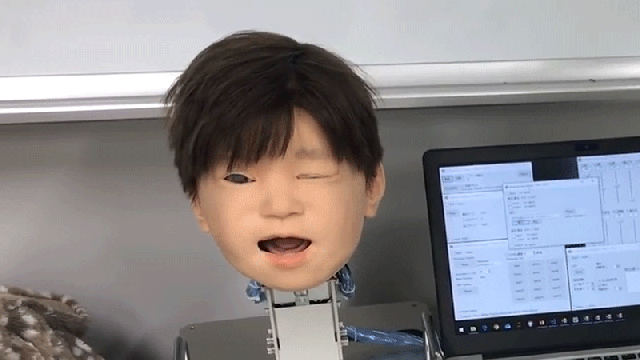It seems we’ve learned absolutely nothing from cautionary tales like the Terminator films, because researchers in Japan have upgraded a robot that looks like a human child with the ability to feel the pain from an electrical charge applied to its skin and wince in pain.
The robot being subjected to these new experiments is named Affetto, and it’s been in development at Japan’s Osaka University for over eight years now. It started “life” as what appeared to be a hairless animatronic doll, with facial expressions limited to the movements of its eyes and mouth.
Over the years Affetto has gained not only a healthy crop of hair, but several generations of upgraded artificial silicone skin, and, with it, the ability to generate more humanlike expressions thanks to an underlying series of pneumatic actuators. As the actuators extend and retract, they contort the skin to create the appearance of facial muscle movement. They’re able to contort the entire face when the robot’s eyes open wide, when its mouth smiles, or, in the case of this latest Affetto update, when the little robot is mildly electrocuted.
Despite the giggles from the robotics researchers when they reach for the trigger button in this video, the pain response experimentation actually has some worthwhile intentions. First and foremost, the goal is to develop a way for robots to sense, recognise, and react to pain. The robot isn’t necessarily experiencing the zap in a negative way, but a strong bolt of electricity could potentially do some real damage to a bot, and having this ability would allow nearby humans to recognise potential issues before a robot fails.
Imagine a robot designed to lift heavy loads making strained grunting sounds when an object it’s hoisting is heavier than its load capacity. The sounds or appearance of pain that humans are all familiar with are harder to ignore than a warning beep on a computer.
That’s another aspect of this research that Affetto’s creators are looking to explore. A robot that’s able to “feel” and identify pain would potentially be more sympathetic and empathetic to humans it’s working with or programmed to care for.
In Japan, the advancement of robots is seen as a potential solution when it comes to caring for the ageing population, or simply serving as a friendly companion those who need one. By understanding pain and discomfort, a robot would be, at least in theory, better able to identify it in humans, and react accordingly to provide not only safe physical assistance (help getting in and out of bed) but potentially even emotional support when it’s needed, but not necessarily asked for.
